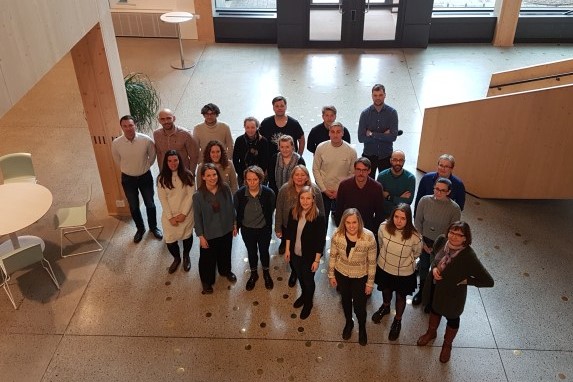IUFRO Spotlight #88 – Using a social science lens on the forest bioeconomy

In many countries, forests are important sources of renewable biomass and figure prominently in bioeconomy strategies.
Forests can be stretched beyond their traditional applications and used in textiles, chemicals, and cross-laminated timber, among other things, and can provide climate and ecological benefits, lead to rural employment opportunities and add to regional growth.
But there are competing demands on forest resources and competing perspectives on how forests should be used. These conflicting perspectives and perceptions on the forest-based bioeconomy impact policy, land use and forest management.
A recent special section in Ambio: A Journal of Environment and Society pulls together studies that look at how, for example, perceptions of the forest-based bioeconomy differ across countries and social groups.
It’s important, say the special section editors, because it opens the door to more inclusive, locally and socially relevant bioeconomy policies and strategies.
The special section is entitled Social dimensions of a forest-based bioeconomy: A summary and synthesis.
“We wanted to better understand the different perspectives and perceptions of the bioeconomy among forest sector stakeholders, future professionals and urban citizens,” said Dr. Lea Ranacher, an editor of the special section.
“The studies range from review and discourse approaches to consumer studies. We hope to encourage further social scientific contributions that allow a more critical view on the concept of bioeconomy,” she said.
Dr. Ranacher teaches at the University of Natural Resources and Life Sciences in Vienna and is also a senior researcher for market analysis and innovation research at Wood K plus in Austria.
“People’s perceptions of bioeconomy matter. The transition to a forest-based bioeconomy depends on how people – from all walks of life – perceive wood-based products and their value chains,” she said. “In order to better understand the transition to a bioeconomy we need to investigate different perceptions and what influences those.”
Dr. Ida Wallin, another of the editors added: “Social scientific research on bioeconomy is still rare and we wanted to address this research gap.”
“Studying the social dimensions of bioeconomy in Europe produces more comprehensive and critical perspectives on the forest-based bioeconomy,” said Dr. Wallin, a post-doctoral researcher at the Chair for Forest and Environmental Policy at the University of Freiburg, Germany, and IUFRO officeholder.
“We see (in the studies) that perceptions of bioeconomy in Europe differ based on where one lives,” she said. “As an example, forestry students in Northern European countries had more awareness of bioeconomy than those in Southern European countries.”
She attributes that primarily to the fact that Northern European countries have strongly promoted the bioeconomy concept for some time now, while Southern European countries have begun to formulate their policy strategies more recently.
Dr. Wallin also pointed out that studies in the special section show that gender, age, pre-existing knowledge, ecological attitudes and consumption style all factor into people’s perception of bioeconomy and that further research along these lines is needed.
Dr. Ranacher noted: “Consumers and other citizens who are ‘non-experts’ are the end-users of the products and they elect the representatives who make forest-based policy decisions. Current bioeconomy conceptualizations show shortcomings regarding the sustainability and social inclusion aspects.

“The special section shows a diversity of social scientific studies and demonstrates the value of this research field by uncovering dominant discourses and perspectives.”
The special section is the result of research done within the PerForm project (2018-2020). PerForm was conducted in collaboration with IUFRO’s 9.05.01 unit which focuses on bioeconomy policy research and is coordinated by Dr. Helga Pülzl of Vienna’s University of Natural Resources and Life Sciences.
PerForm is an international collaboration of researchers funded by the European Forest Institute and coordinated by Prof. Daniela Kleinschmit of the University of Freiburg with collaborating researchers from Austria, Slovakia, France, Italy, Sweden and Finland. Prof. Kleinschmit is also IUFRO Vice-President responsible for Divisions.
The aim of PerForm was to better understand regional disparities of national bioeconomy policies and explore the different perceptions of a forest-based bioeconomy in Europe.
The Ambio special section contains the main scientific results from the PerForm project as well as findings from other research groups on the topic of the social dimensions of forest-based bioeconomy.
Social dimensions of a forest-based bioeconomy: A summary and synthesis can be found at: https://link.springer.com/journal/13280/volumes-and-issues/49-12
More information on the PerForm Project can be found at: https://perform-bioeconomy.info/
IUFRO 9.05.01 Bioeconomy policy:
https://www.iufro.org/science/divisions/division-9/90000/90500/90501/
View all IUFRO Spotlights at http://www.iufro.org/media/iufro-spotlights/

Leave a Reply